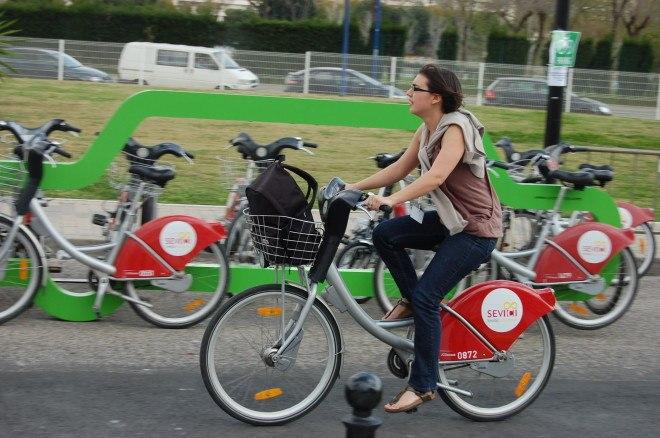- News
- Reviews
- Bikes
- Accessories
- Accessories - misc
- Computer mounts
- Bags
- Bar ends
- Bike bags & cases
- Bottle cages
- Bottles
- Cameras
- Car racks
- Child seats
- Computers
- Glasses
- GPS units
- Helmets
- Lights - front
- Lights - rear
- Lights - sets
- Locks
- Mirrors
- Mudguards
- Racks
- Pumps & CO2 inflators
- Puncture kits
- Reflectives
- Smart watches
- Stands and racks
- Trailers
- Clothing
- Components
- Bar tape & grips
- Bottom brackets
- Brake & gear cables
- Brake & STI levers
- Brake pads & spares
- Brakes
- Cassettes & freewheels
- Chains
- Chainsets & chainrings
- Derailleurs - front
- Derailleurs - rear
- Forks
- Gear levers & shifters
- Groupsets
- Handlebars & extensions
- Headsets
- Hubs
- Inner tubes
- Pedals
- Quick releases & skewers
- Saddles
- Seatposts
- Stems
- Wheels
- Tyres
- Health, fitness and nutrition
- Tools and workshop
- Miscellaneous
- Cross country mountain bikes
- Tubeless valves
- Buyers Guides
- Features
- Forum
- Recommends
- Podcast
news
 Bike sharing in Seville.jpg
Bike sharing in Seville.jpgResearch paper concludes that networking Seville’s cycle lanes helped improved cycle safety
Researchers from the University of Seville have found that connecting the Spanish city’s cycle lanes increased their positive effects on cycling safety.
The study, to be published in the May issue of the journal Accident Analysis and Prevention, looked at the risk of cyclists being involved in a collision with a motor vehicle.
To do this, the researchers looked at data reported by the traffic police in the period 2000 to 2013 – seven years before and after the city’s cycle network was built.
Seville has created a network of 120km of segregated cycle tracks and now sees more than 70,000 cycle trips made daily, up from just 6,000 trips back in 2006.
The researchers observed not only that the risk of cycling dropped after the creation of a network of segregated cycle lanes, but that networking itself had a substantial effect on safety beyond the increase in distance covered by dedicated infrastructure.
The majority of Seville’s cycle network was implemented in just two years and Seville’s head of urban planning, José Garcia Cebrián, told the Guardian that opposition to the work only began when the infrastructure was actually being built.
“In Spain there’s been a lot of planning about cycling, but then the plans get put into a drawer. So there was no opposition during the planning process, as everyone thought the same thing would happen.”
He added: “As soon as the building work was finishing and the fences were removed, the cyclists just came. The head of the building team, who’d been very sceptical about the process, called me and said, ‘Where have all those cyclists come from?’ That’s when I knew for sure it was going to work. They came from all over the city.”
Last year, the whole of Seville city centre was declared a 30km/h zone in an attempt to make cycling and walking more attractive. Cyclists also have priority on all of the streets.
Alex has written for more cricket publications than the rest of the road.cc team combined. Despite the apparent evidence of this picture, he doesn't especially like cake.
Latest Comments
- RoubaixCube 1 hour 4 min ago
They absolutely put their foot in it with that one!
- chrisonabike 3 hours 35 min ago
Apparently someone did a study on this......
- Smoggysteve 4 hours 5 min ago
Funnily enough, I do and police Scotland are useless.
- David9694 4 hours 51 min ago
Dramatic Huddersfield crash as van flips onto the kerb...
- MinardiM189 6 hours 8 min ago
I totally hate the team selection process. So that is it for me with Velogames
- Steve K 7 hours 3 min ago
Drivers have to drive on the left, and when there is more than one lane (except at junctions) stay in the left lane except when overtaking. There...
- the little onion 7 hours 58 min ago
DO IT FOR YOOOOOOOORKSHIIIIIRE
- chrisonabike 10 hours 27 min ago
Shurely you stop at "you'd be liable". I haven't checked the details yet but surely cameras and witnesses only come in if there is a dispute? If...
- NoOneSpecial 10 hours 31 min ago
Shimano Tourney rear mech has an oversized lower pulley and it's red!...
Add new comment
4 comments
Wow. Just shows how a little can-do attitude can get things sorted.
If you build it, they will come...
Almost enough to bring a tear to ones eye. What a shame we have the pathetic politicians we do here.
connecting cycle lanes - genius!
Here I am, hitting refresh on the Daily Mail homepage and... nothing!
Brilliant! No longer can the nimbys and naysayers suggest that investing in cycling doesn't work or isn't value for money.
I look forward to the mainstream media, especially the BBC, immediately ignoring this story, just like the two reports last week about cycling and health.